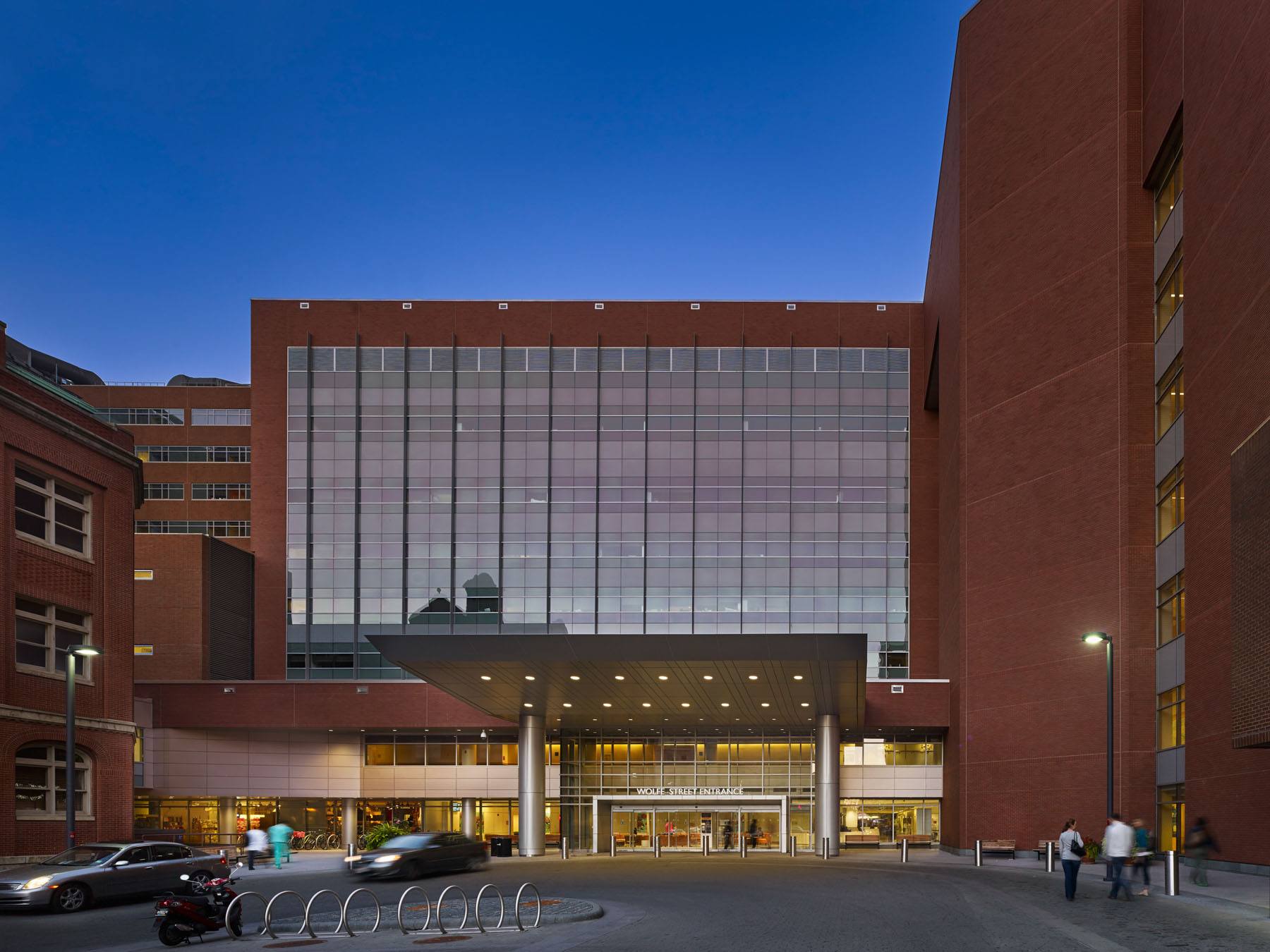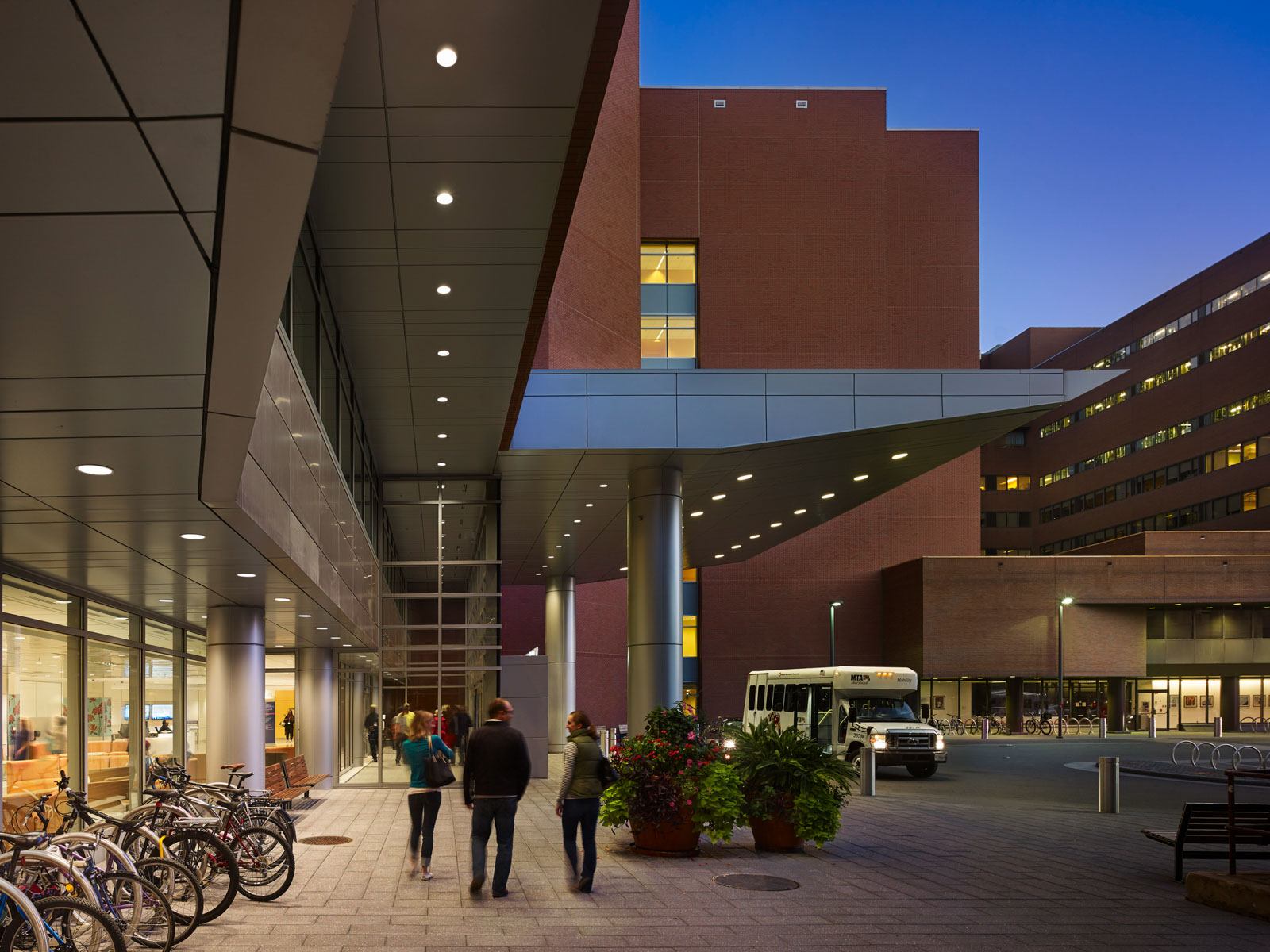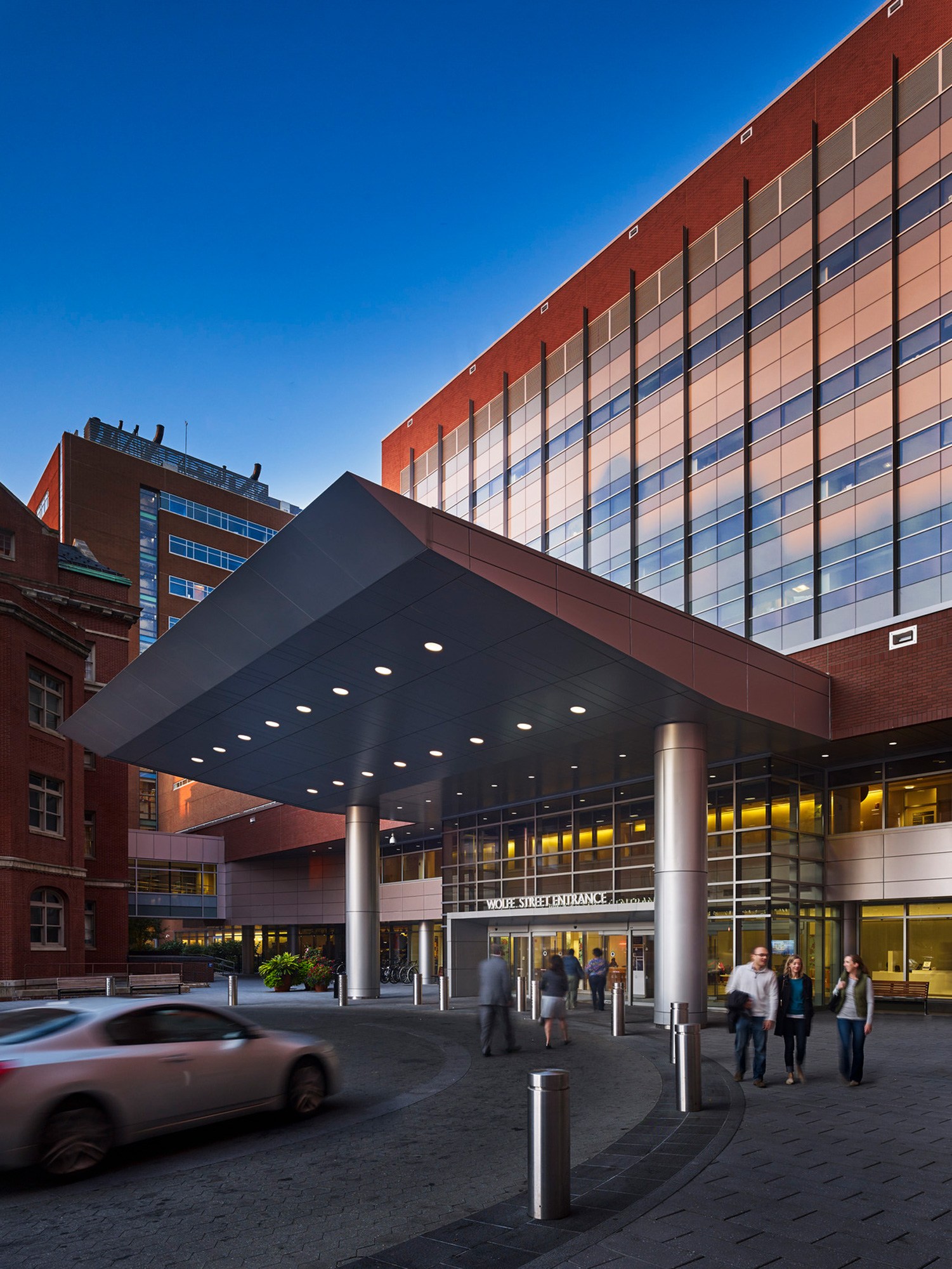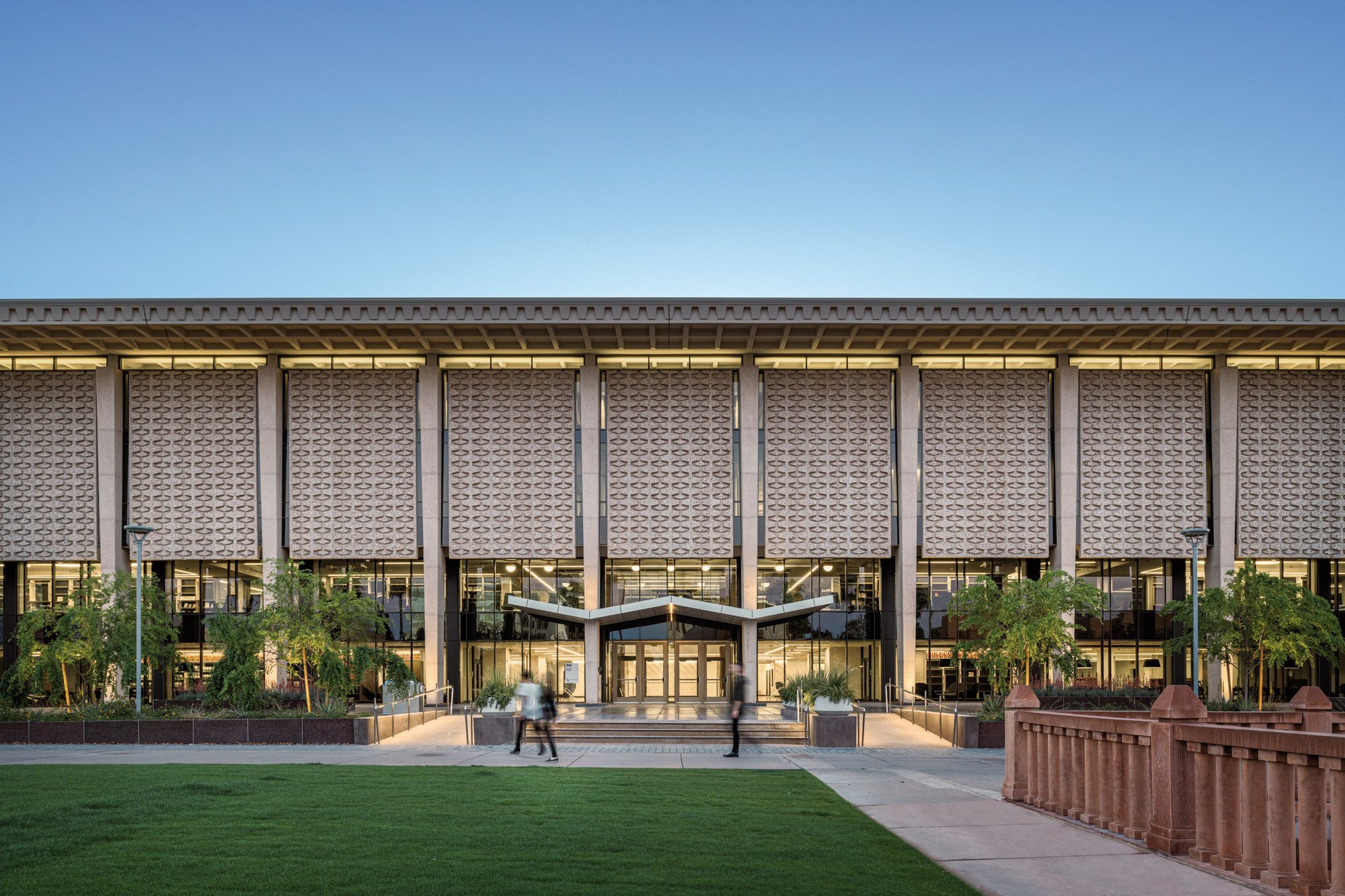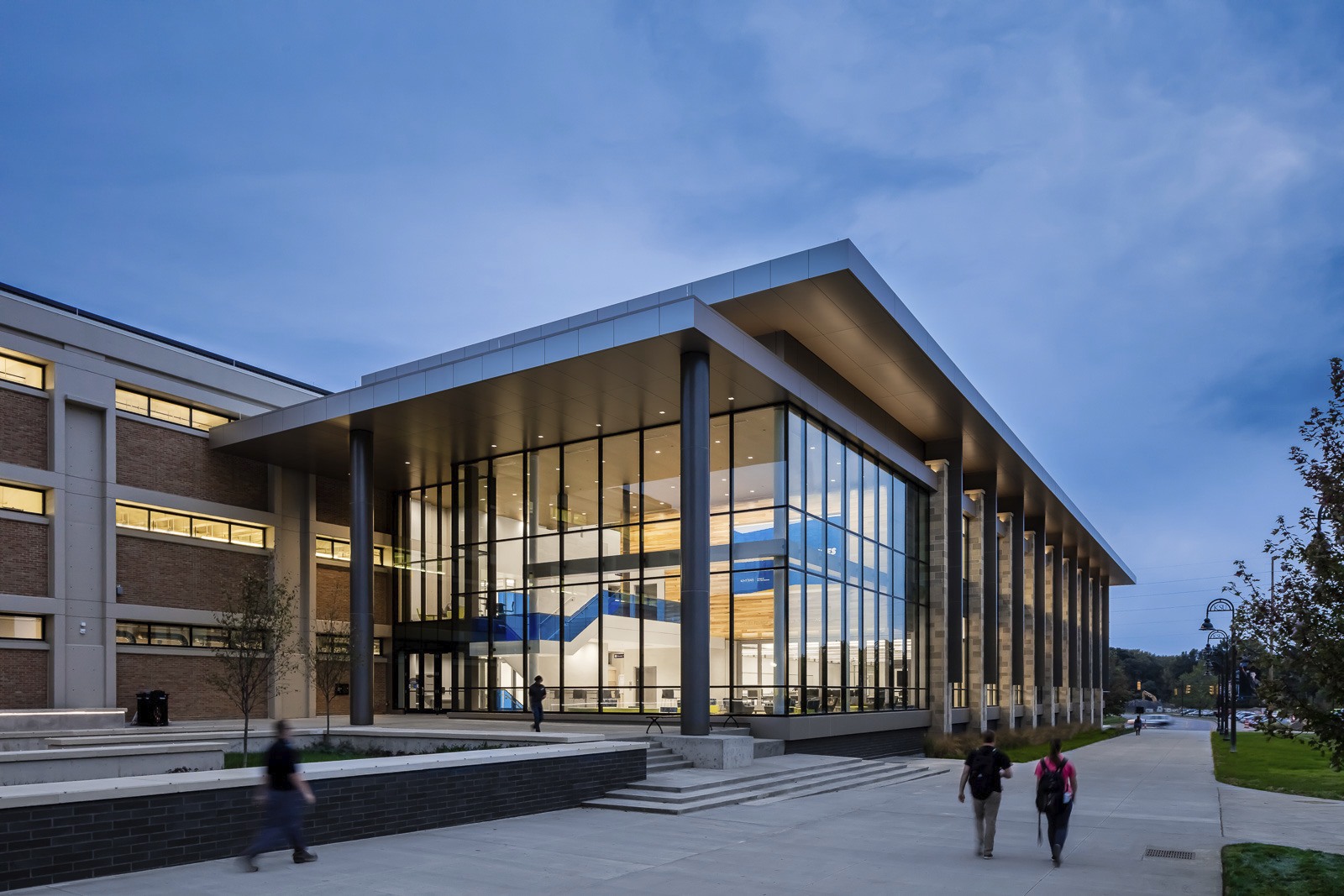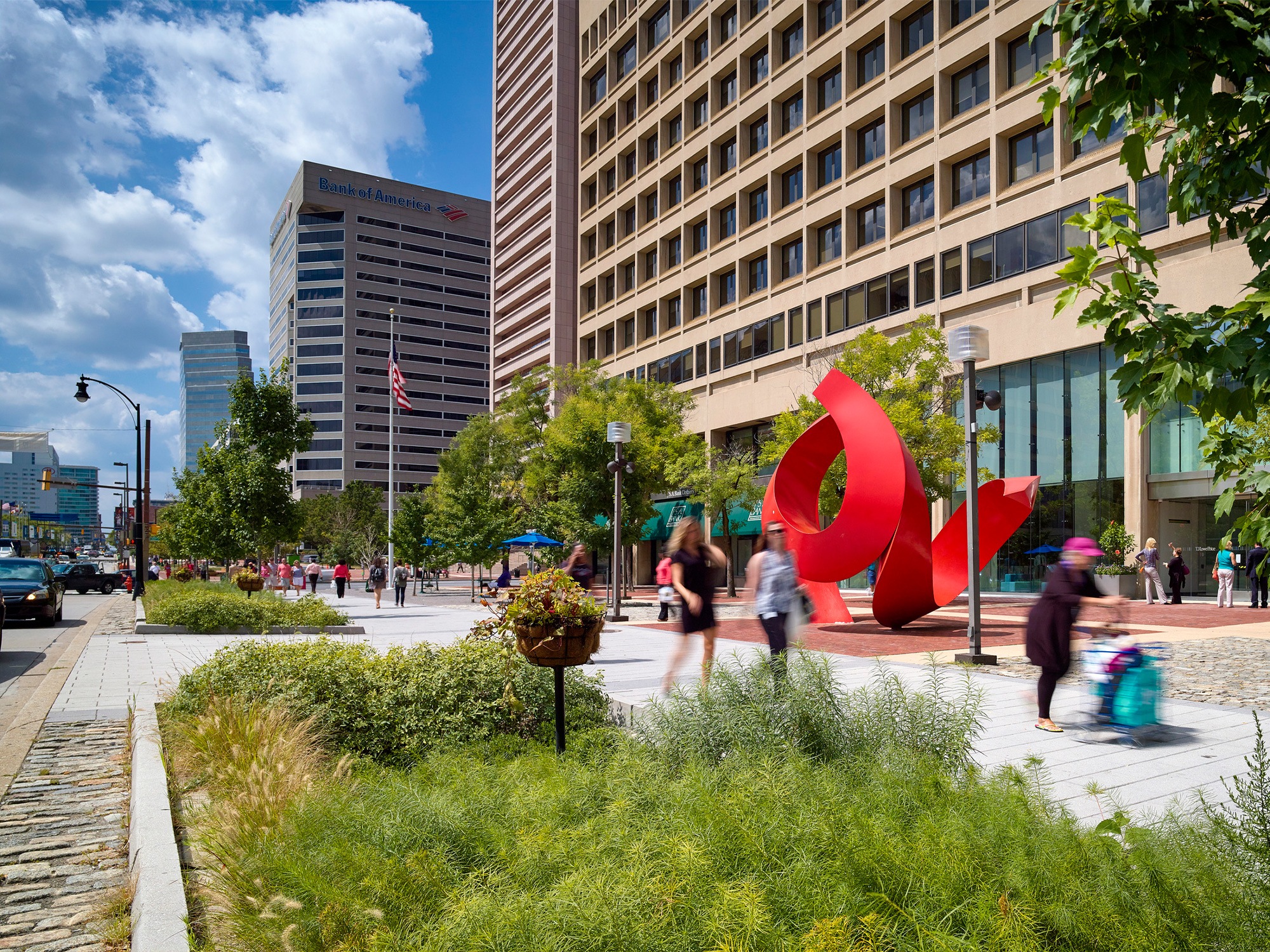Sustainability is a core Ayers Saint Gross value and resiliency is a crucial aspect of this goal. With much of the research and technology looking into new construction, it is important not to forget the sustainable possibilities of existing buildings. The innovative double-thermal mass skin implemented as part of the Johns Hopkins Hospital Nelson Harvey Building Exterior Over-Cladding and Interior Renovation is a great example of this.
For hospital buildings in particular, where there can be no loss of patient care and the building must remain occupied, maximizing existing resources is paramount. By avoiding the carbon footprint associated with demolition and site work, applying inventive design solutions to existing buildings gains not only the sustainability advantages of new technologies, but also leads to an overall improvement, a substantial cost savings for the owner, and a reduced construction schedule.
For this project, forensic and visual observations of the façade disclosed severe thermal and moisture failures with decomposed flashing and lack of insulation. Similarly, the building was constructed without allowing thermal expansion vertically or horizontally of the building envelope, so areas of the façade were structurally failing, bowing, and delaminating. Like many buildings built over the last several decades, however, the structure was still sound.
Innovative solutions using thin precast concrete panels in combination with existing masonry created a hybrid double-skin envelope. In addition to all of the environmental benefits of ensuring the resiliency of the building, the double-thermal mass wall decreases heat transfer gain/loss through the building envelope for any given season and capitalizes on the high heat capacity of concrete and masonry to delay heat flow through the envelope by an action termed thermal lag. This results in a higher performing building.
We are happy to share these advancements and real-world applications with the world, and are always looking to learn more and iterate further.
